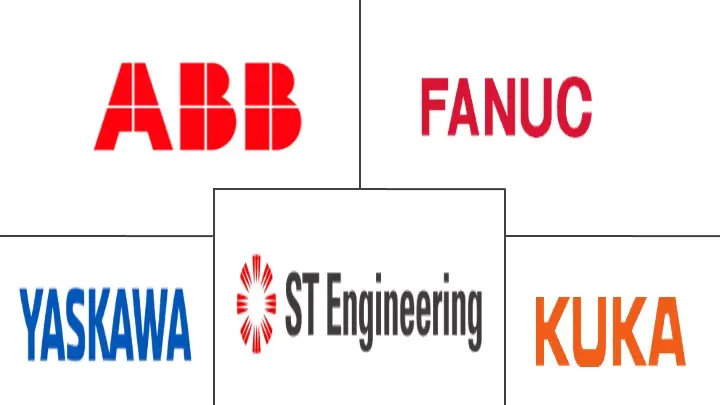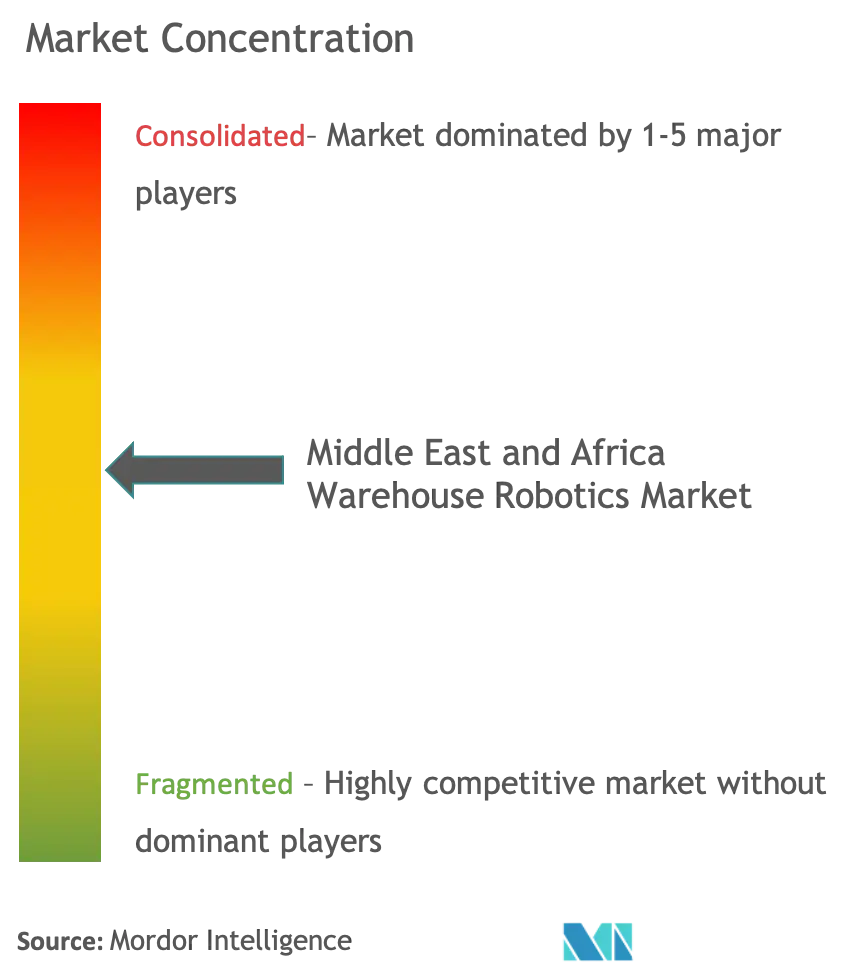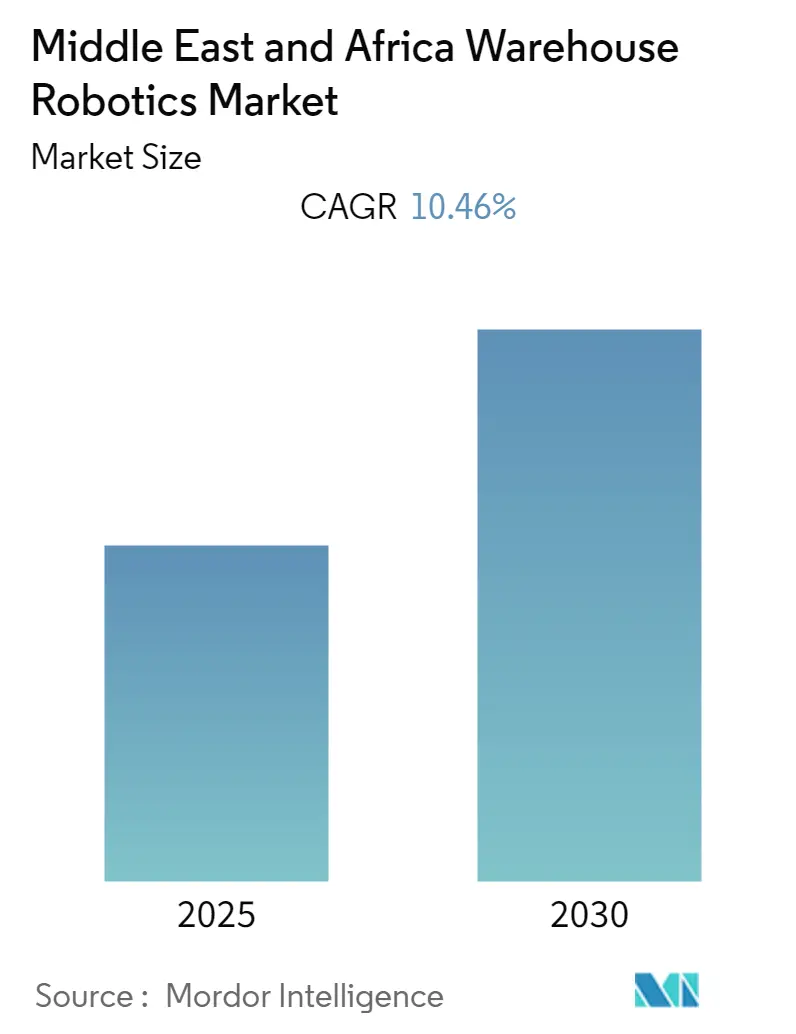
MEA Warehouse Robotics Market Analysis
The Middle East and Africa Warehouse Robotics Market is expected to register a CAGR of 10.46% during the forecast period.
- South Africa is one of the largest economies in the African continent. Intra-Africa trade is on the rise. African countries signed a trade agreement in March 2018 called the African Continental Free Trade Area Agreement (AfCFTA), which permitted countries to remove tariffs on 90% of goods, progressively liberalize trade in services, and address a host of other non-tariff barriers. These kind of agreements are expected to increase the need for robotics to ease the management of goods.
- South Africa, being a major tourist attraction in Africa, is investing heavily in airports, and is the single largest and fastest growing segment in the MEA. Three South African Airports, Cape Town, Durban, and Johannesburg's international airports, were considered to be the best in the world, as well as were awarded the 2019 Skytrax World Airport Awards.
- In 2019, Quicktron announced the launch of the first intelligent robot logistics center in the Middle East in Dubai, marking the success of Quicktron's global intelligent robot solutions across the Middle East and North Africa.
- The IQ Fullfilment project with Quicktron is located in Dubai investment park, and its business is through the use of advanced intelligent robot and advanced software platform for enterprise users with efficient and revolutionary innovation of supply chain logistics solutions, which help enterprises seamlessly integrate into the operation, reduce the financial burden on business performance, and to provide products and services of supply chain based on intelligent robot, including intelligent storage, intelligent sorting and selection, product quality inspection and measurement, brand service, etc.
- Moreover, with the spread of the Covid-19 pandemic, robots and automation are already playing a critical role in managing the situation. Further, the situation is likely to bring new opportunities to the market.
MEA Warehouse Robotics Market Trends
Sortation Systems to Drive the Market Growth
- There is a high demand for sortation systems from end users, such as post and parcel services, food and beverages, and the e-commerce industry. Factors, such as increasing labor costs and changing consumer buying behavior, have bolstered the demand for faster and more accurate delivery operations, which have, in turn, developed a considerable demand for automated sortation systems.
- There is a demand for high-speed packaging systems decided by the sortation equipment in high-volume distribution scenarios, which often estimates production speed. But often, drawbacks, such as high initial investment and large space requirement for installations, outweigh the merits, thereby, resulting in sluggish growth.
- Vendors in the market offer tailored solutions that enable their customers to sustain competitiveness in the respective industries. This is more relevant to the post and parcel (lead by e-commerce) and food and beverage industries. With a rapid change in operational requirements across these industries, manufacturers find the need to implement conveyor systems that can be reconfigured to accommodate those needs.
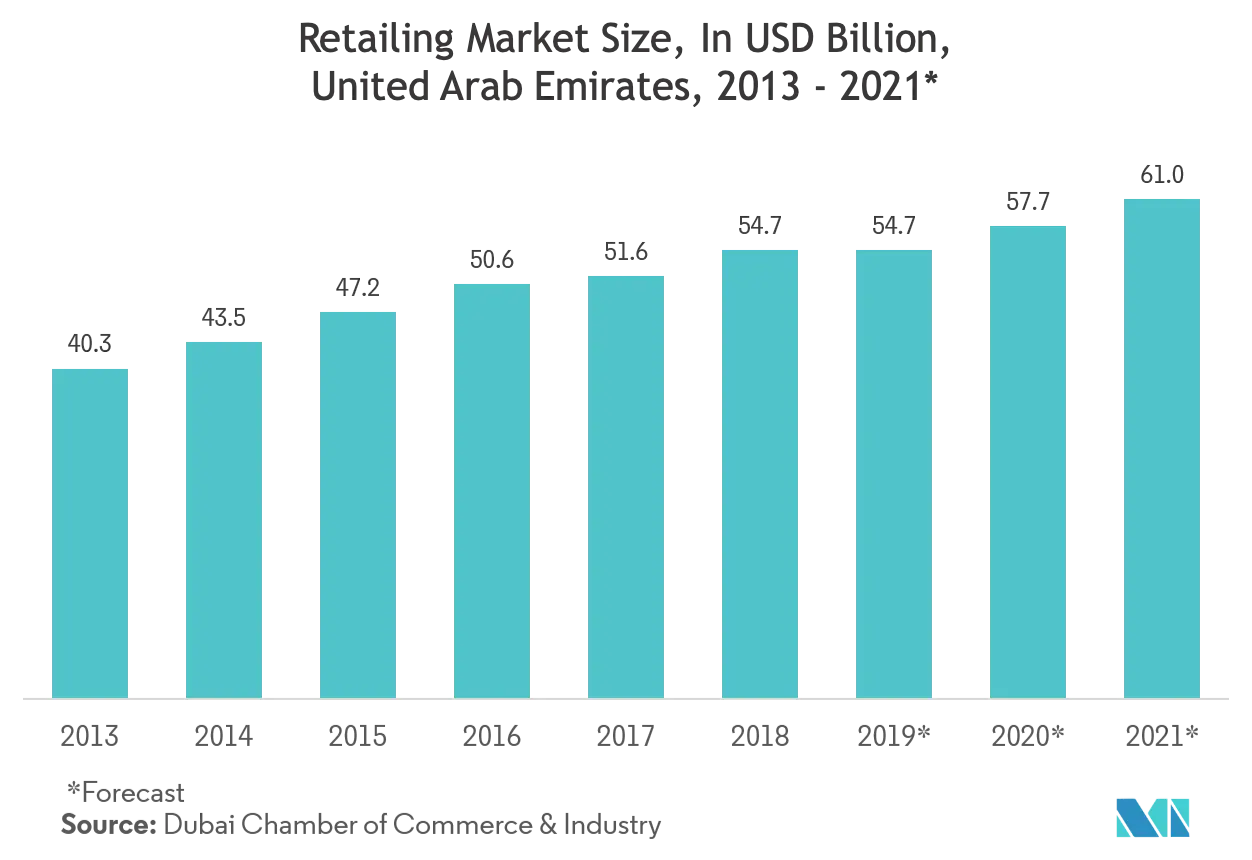
Saudi Arabia Holds Significant Market Share
- The Saudi Arabian automotive industry is still in the nascent stage. Currently, it is developing a car manufacturing city, as a part of 2030 Vision reform plan. This move is expected to increase the demand for warehouse robotics. Parking solutions using these systems are expected to gain more traction in the region over the forecast period with focuses on efficient parking spaces use.
- Saudi Arabia is one of the major tourist destinations in the world and is attracting many foreign tourists. This increase in the average air traffic in the country is propelling the demand for robotic equipment in the airport end-user segment.
- King Abdulaziz International Airport, known for its Hajj Terminal, is the busiest airport of Saudi Arabia. Currently, it is undergoing expansion, which is expected to increase the airport’s capacity from 13 million passengers per year to 80 million passengers per year. The project is expected to be completed by 2035. This propelling the growth of the market studied.
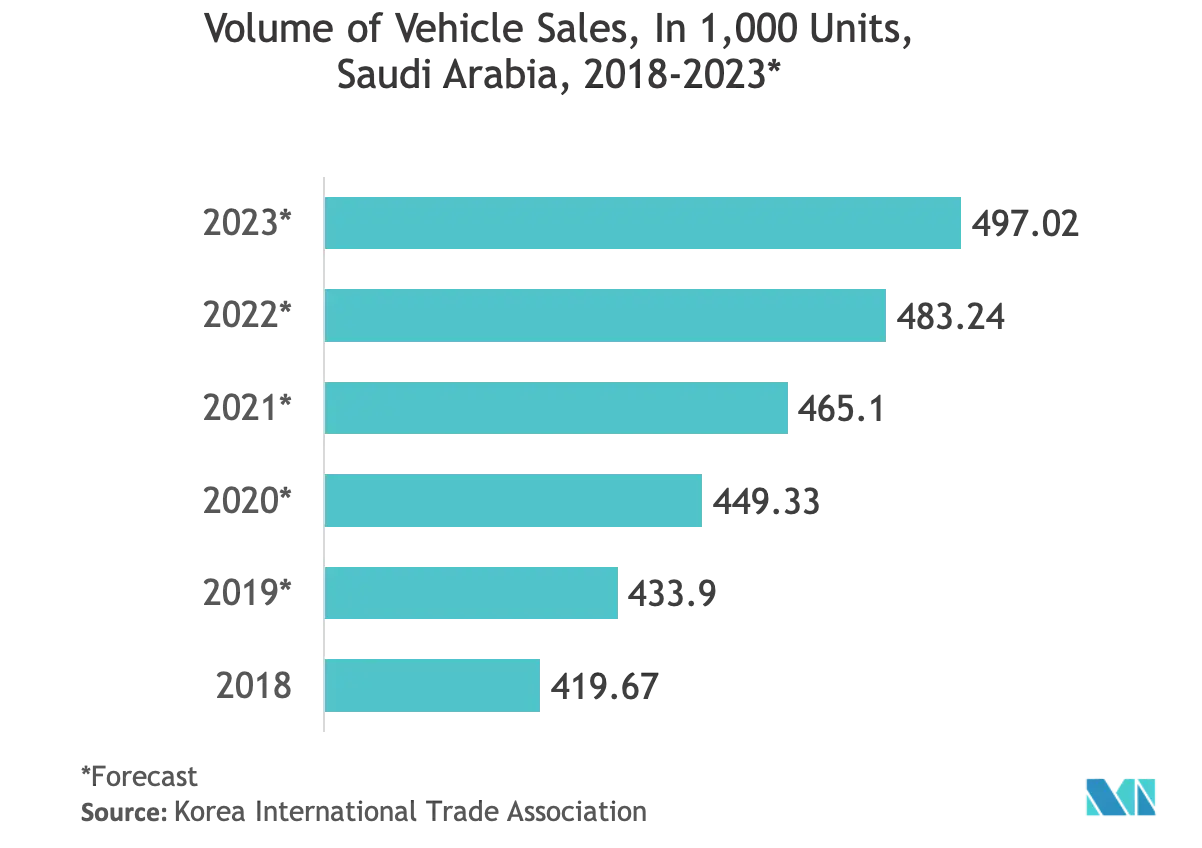
MEA Warehouse Robotics Industry Overview
The Middle East and Africa warehouse robotics market is moderately fragmented. The major players with a significant share in the market are expanding their customer base across various regions and many companies are forming strategic and collaborative initiatives with various start-up companies to increase their market share and their profitability. Some of the recent developments in the market are:
- September 2020 - ABB extended its family of small six-axis industrial robots with launch of IRB 1300 to meet the demand for faster and more compact robot able to rapidly lift heavy objects or loads with complex and irregular shapes. The robot offers improvement in cycle times and is nearly 60 percent lighter and 83 percent smaller than the IRB 1600. With a footprint of just 220 mm by 220 mm, the IRB 1300 is designed for use in small spaces, enabling more robots to be deployed in a confined area.
- April 2020 - Yaskawa Launched a new multipurpose robot, Motoman-GP300R, a new lineup of shelf-type robots that strengthens to save space in facilities. It operates downwards with a wide area where the footprint is mounted, which makes it ideal for handling work from above.
MEA Warehouse Robotics Market Leaders
-
ABB Limited
-
KUKA Aktiengesellschaft (KUKA)
-
Yaskawa Motoman
-
Singapore technologies Engineering Ltd.
-
Fanuc Corporation
- *Disclaimer: Major Players sorted in no particular order
MEA Warehouse Robotics Industry Segmentation
Warehouse is the most vital part in the supply chain process. They perform products transit that starts from process of production facility, acknowledgement, organizing, and also the tagging for delivering product on the required address. Warehouse robotics is the adoption of robotics in the warehouse that performs functions like Storage, Packaging, Trans-shipment, and Other Functions. End Users considered under the scope includes Food and Beverage, Automotive, Retail, Electrical and Electronics, Pharmaceutical,and Other End Users. The scope of the market is comprehensive and is limited to Middle East and Africa.
| Type | Industrial Robots |
| Sortation Systems | |
| Conveyors | |
| Palletizers | |
| Automated Storage and Retrieval System (ASRS) | |
| Mobile Robots (AGVs and AMRs) | |
| Function | Storage |
| Packaging | |
| Trans shipments | |
| Other Functions | |
| End User | Food and Beverage |
| Automotive | |
| Retail | |
| Electrical and Electronics | |
| Pharmaceutical | |
| Other End Users | |
| Country | Saudi Arabia |
| South Africa | |
| United Arab Emirates | |
| Rest of Middle East and Africa |
MEA Warehouse Robotics Market Research FAQs
What is the current Middle East and Africa Warehouse Robotics Market size?
The Middle East and Africa Warehouse Robotics Market is projected to register a CAGR of 10.46% during the forecast period (2025-2030)
Who are the key players in Middle East and Africa Warehouse Robotics Market?
ABB Limited, KUKA Aktiengesellschaft (KUKA), Yaskawa Motoman, Singapore technologies Engineering Ltd. and Fanuc Corporation are the major companies operating in the Middle East and Africa Warehouse Robotics Market.
What years does this Middle East and Africa Warehouse Robotics Market cover?
The report covers the Middle East and Africa Warehouse Robotics Market historical market size for years: 2019, 2020, 2021, 2022, 2023 and 2024. The report also forecasts the Middle East and Africa Warehouse Robotics Market size for years: 2025, 2026, 2027, 2028, 2029 and 2030.
Our Best Selling Reports
Middle East and Africa Warehouse Robotics Industry Report
Statistics for the 2025 Middle East and Africa Warehouse Robotics market share, size and revenue growth rate, created by Mordor Intelligence™ Industry Reports. Middle East and Africa Warehouse Robotics analysis includes a market forecast outlook for 2025 to 2030 and historical overview. Get a sample of this industry analysis as a free report PDF download.

